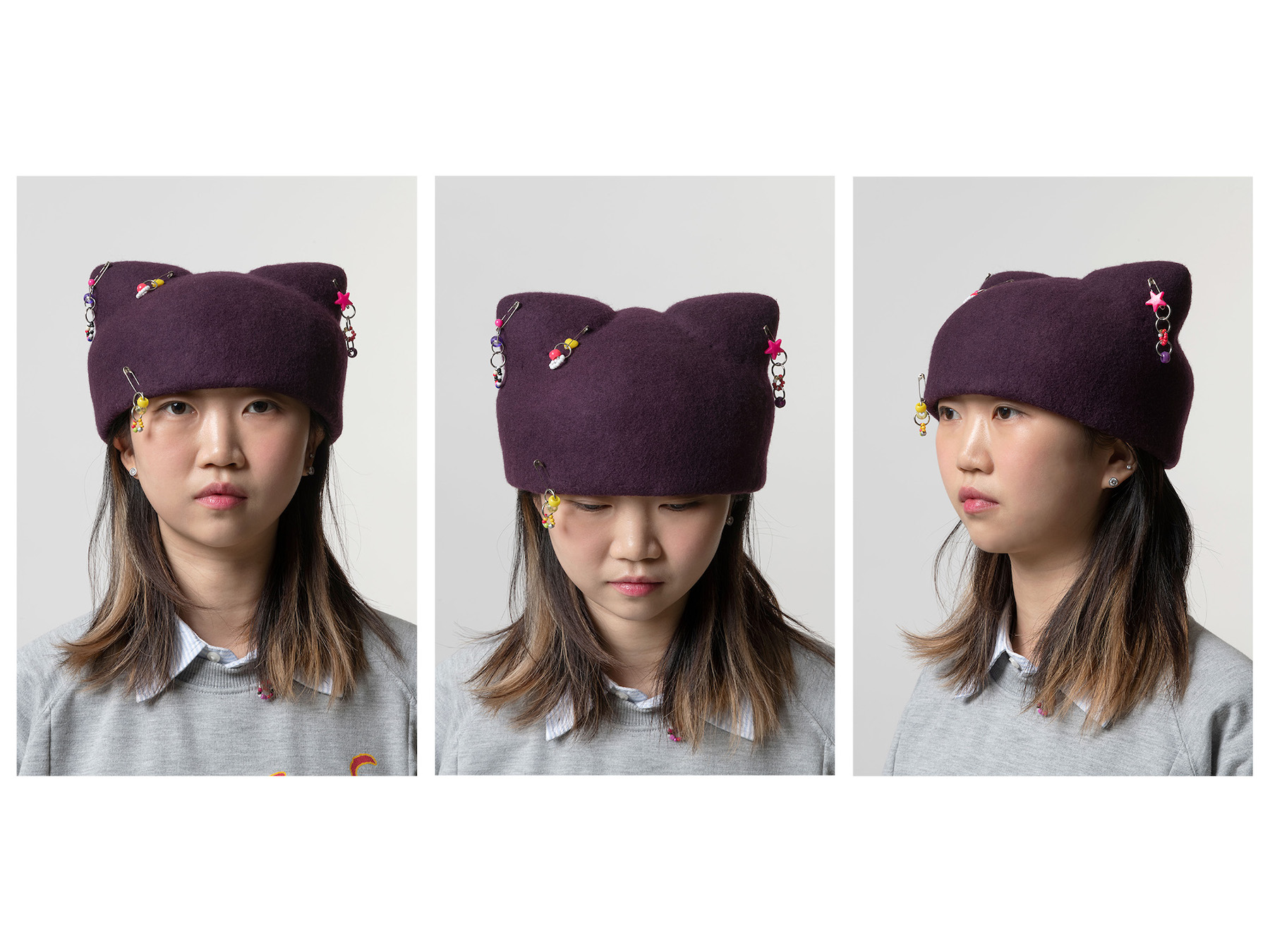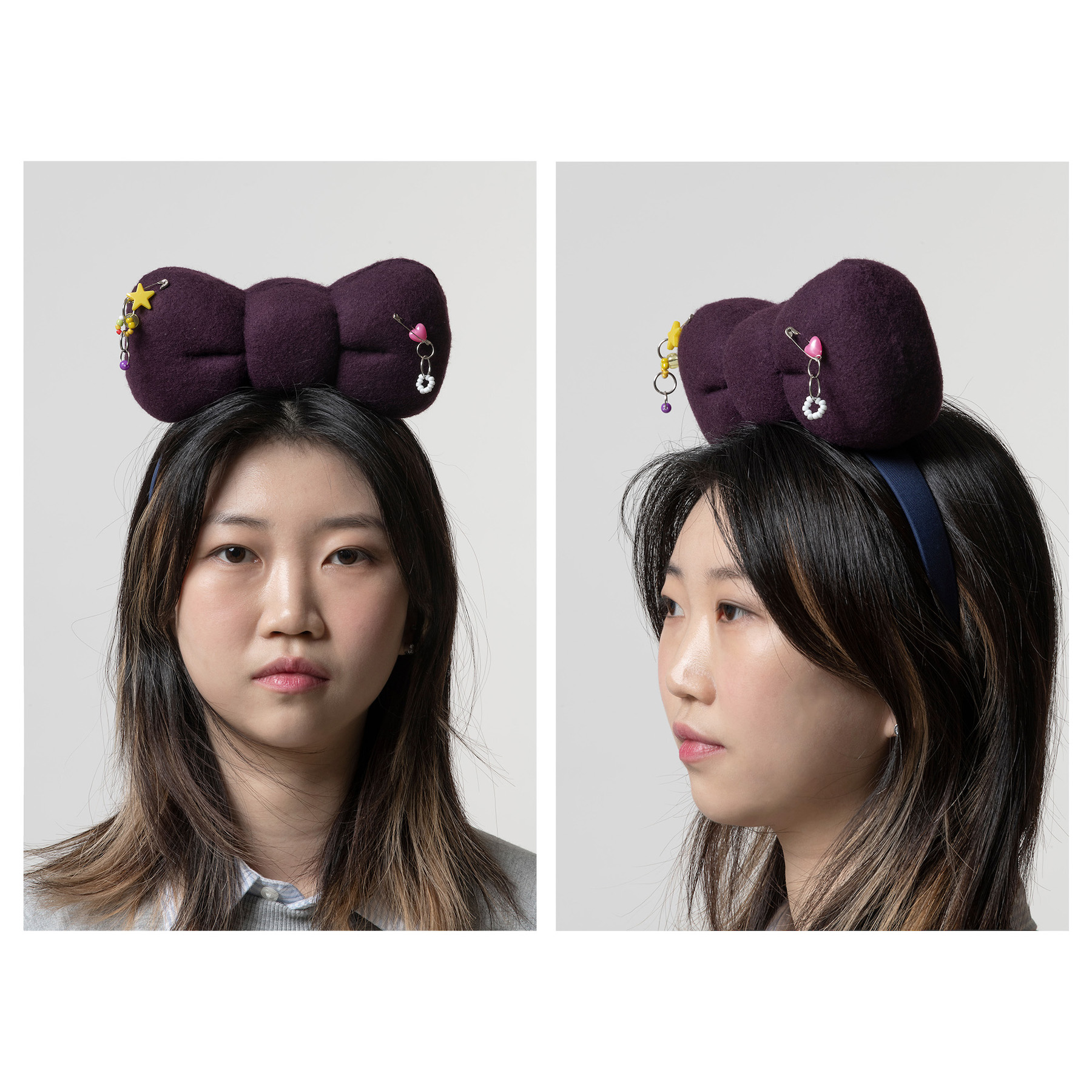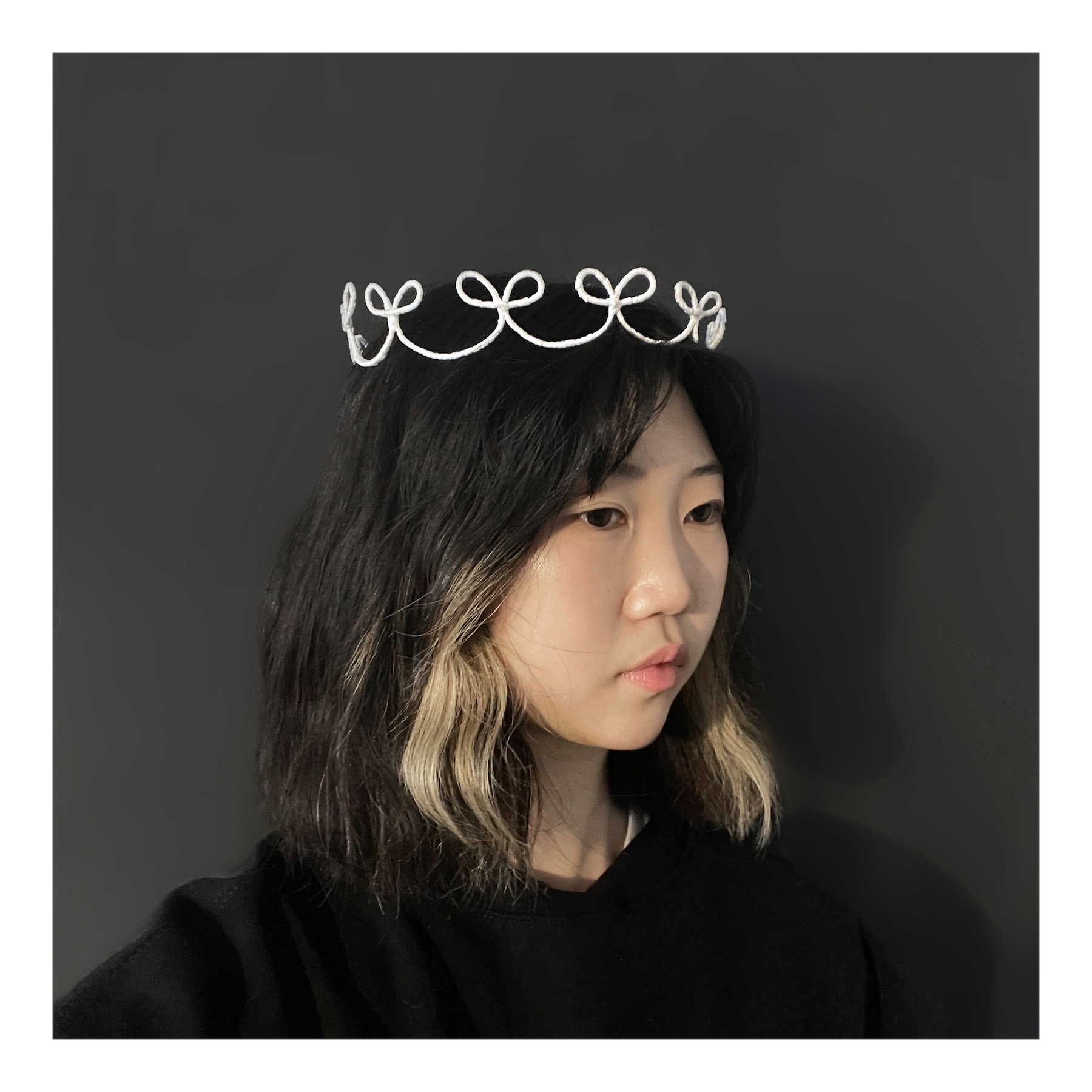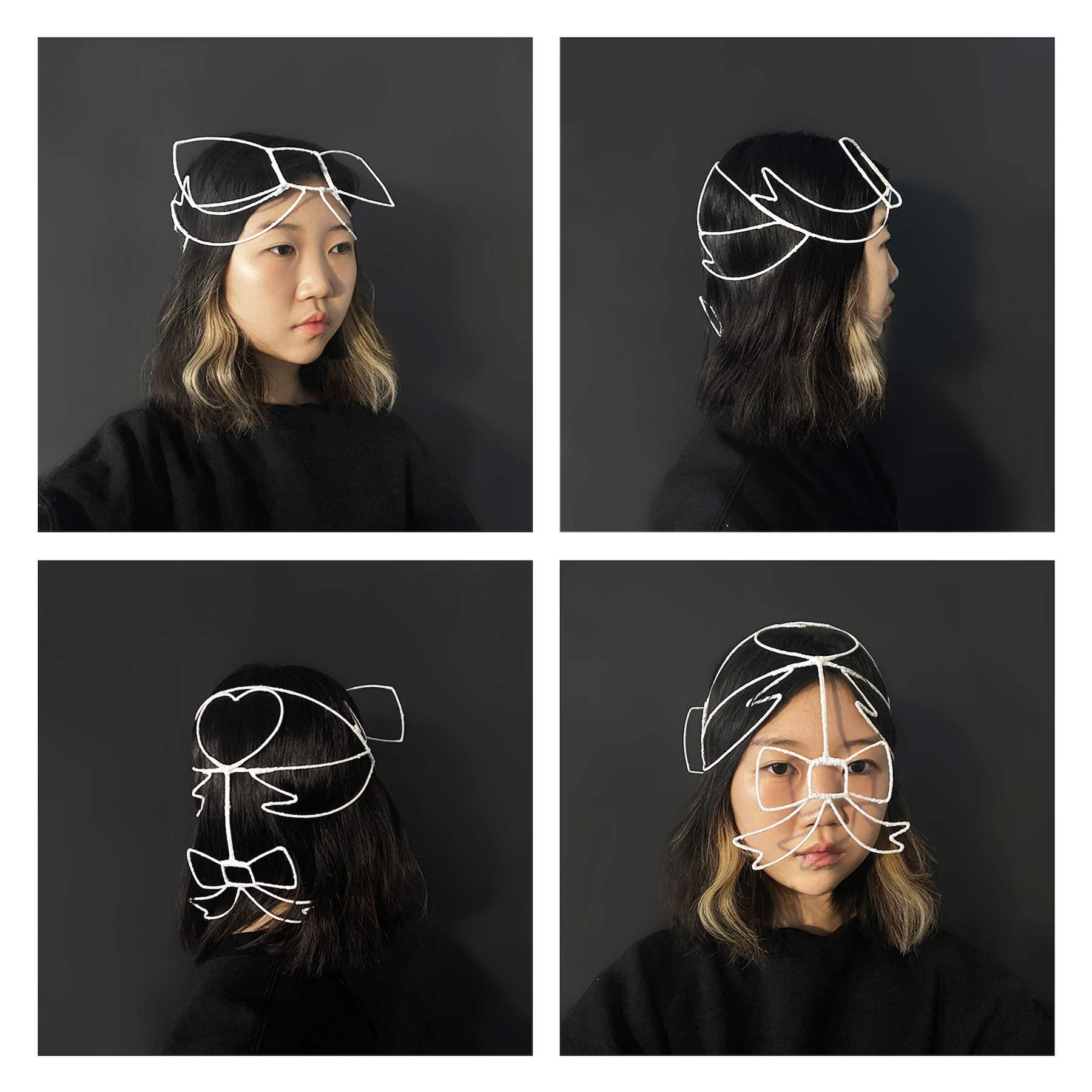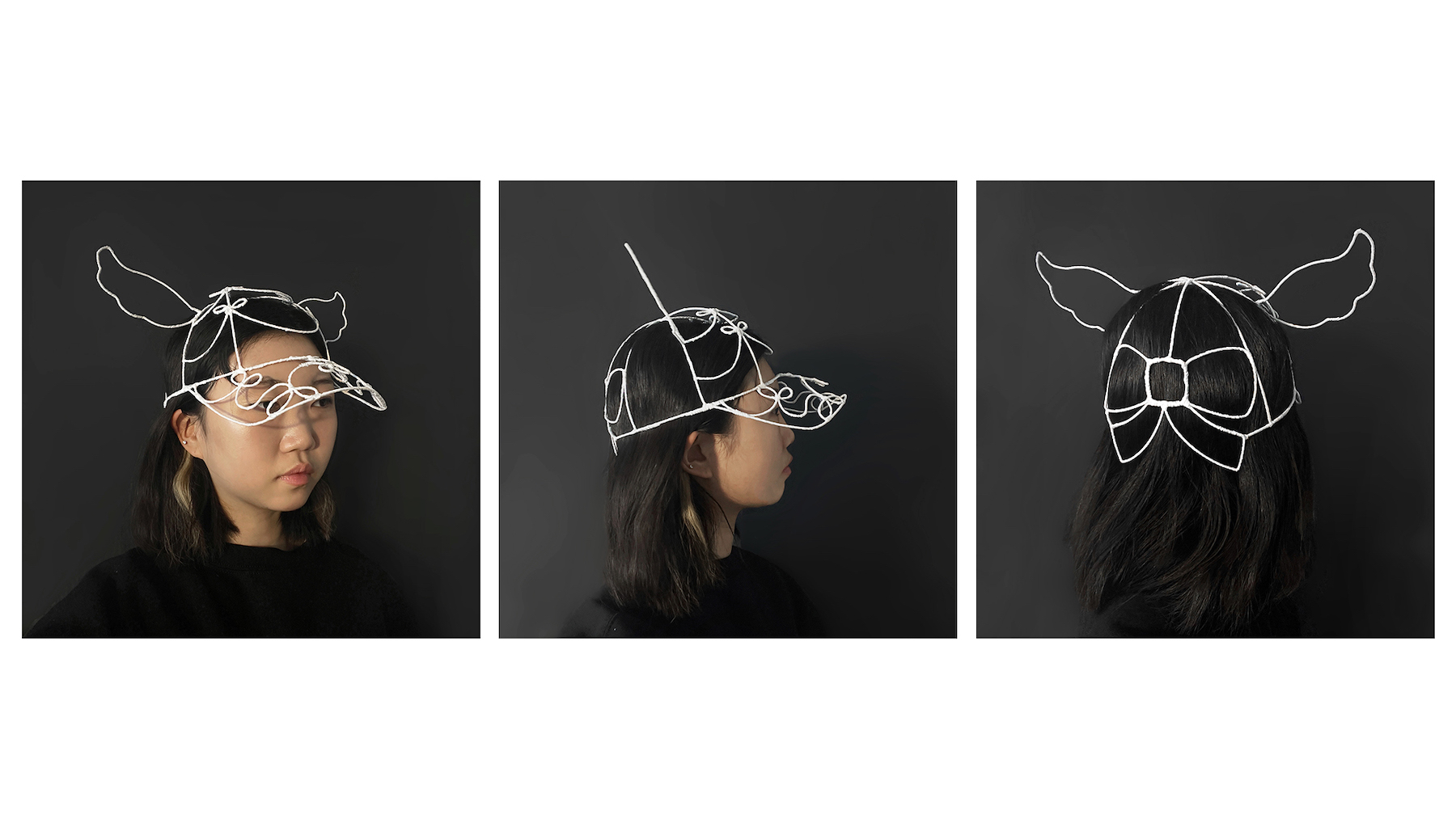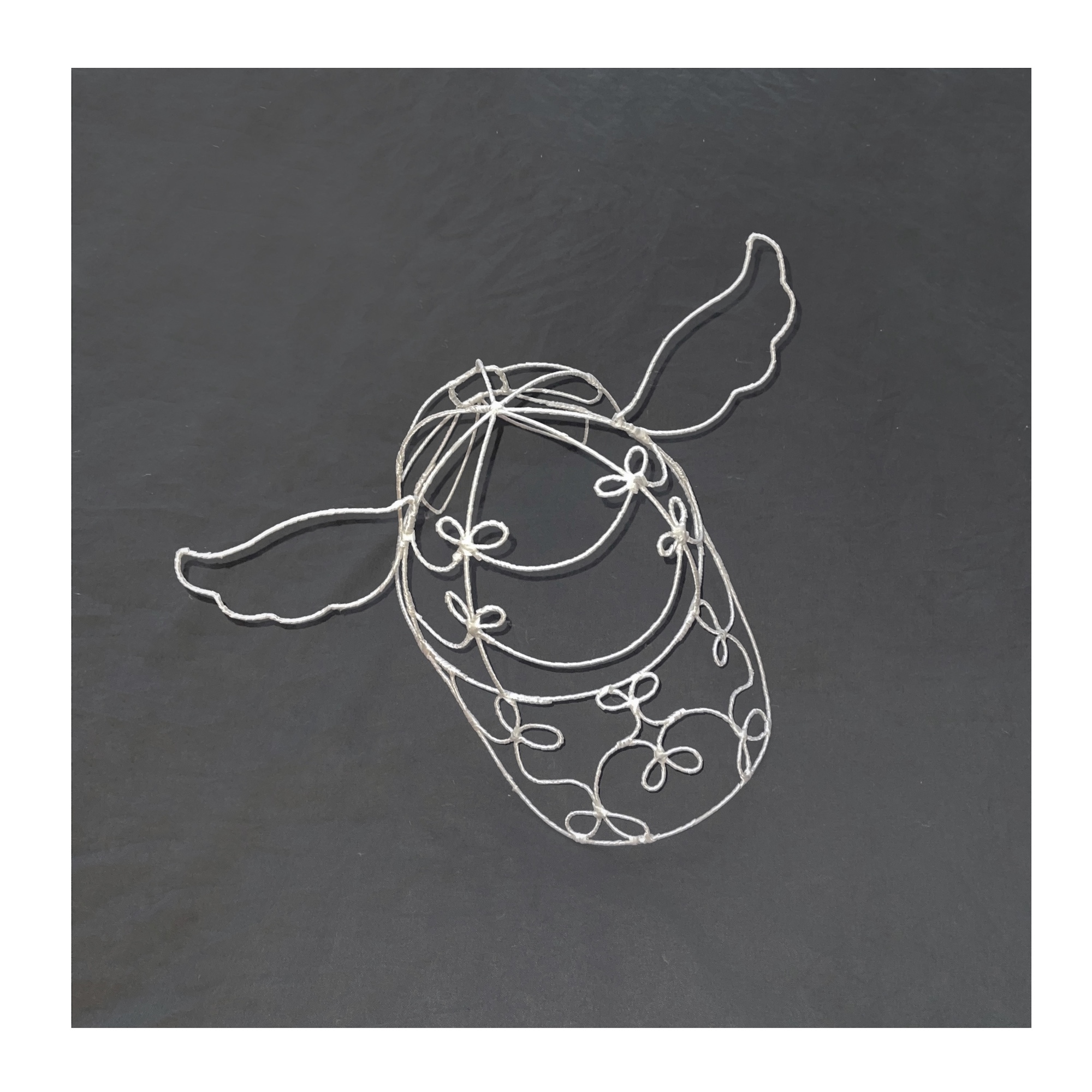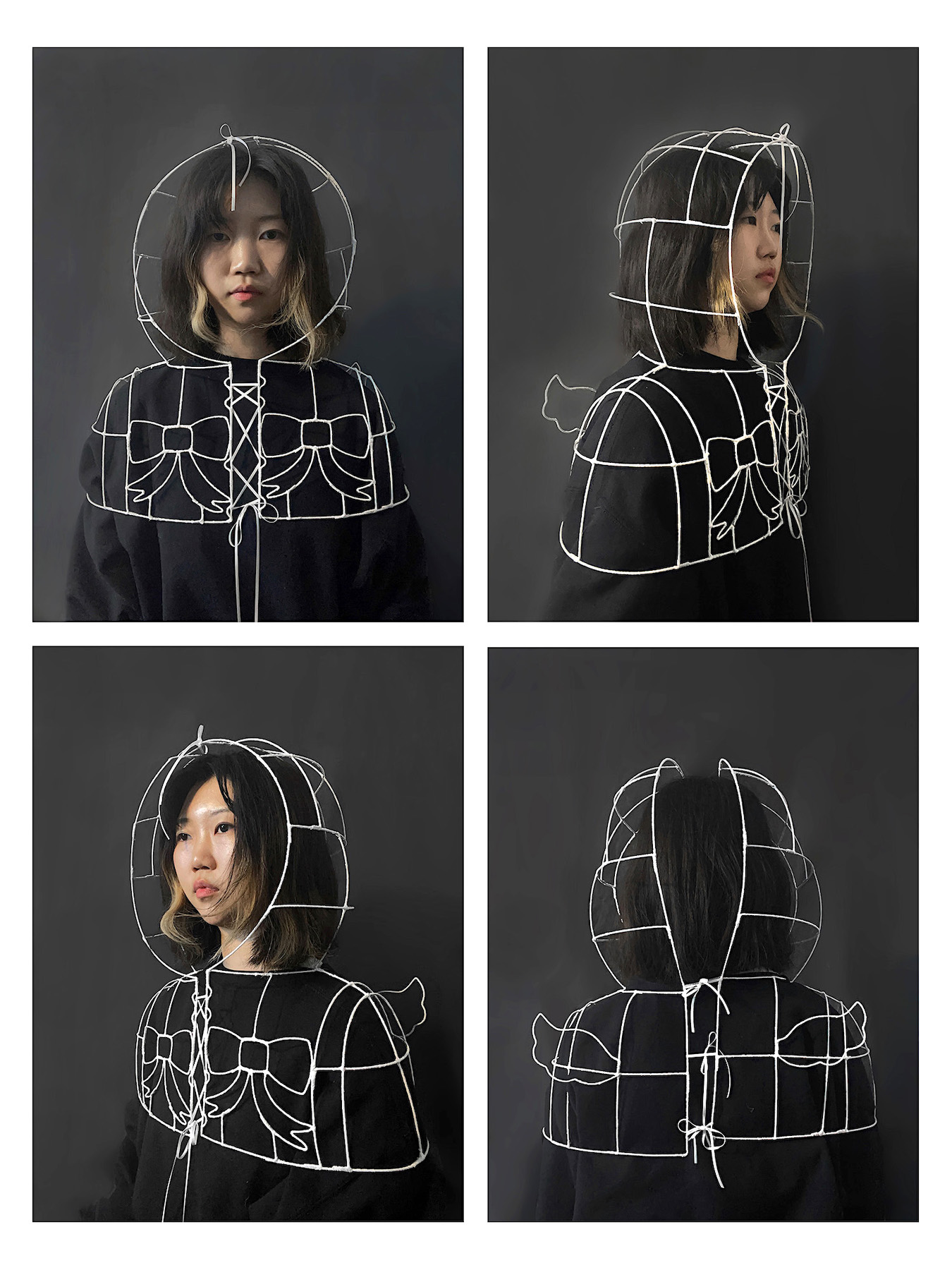Working across mediums, I learned that wearable art most strongly speaks about shape-shifting. Headwear specifically works with the face, allowing us to decorate and/or cover our identity with another self-invented character. The presented body of works depicts the evolution of this concept of concealing and revealing the self.
The first two felt pieces, “Kitty” and “Bow”, were created as research on the matter of cuteness. I was asking the question of why people are drawn to cuteness. I suggest that there is an empowering quality to cuteness and that we seek them as a defense mechanism. People tend to rely on cuteness as a tool to shield or cover exposed vulnerabilities. Cuteness suggests helplessness and fragility, which is exactly what all of us are. Therefore, facing another “cute” being is comforting. By layering ourselves with cuteness, we are being honest and empowering each other. Cat ears and bows are both symbols of cuteness and recreating these icons with a soft fiber material such as felt adds the metaphor of the delicacy of our minds. These were also the first pieces using the felt-blocking technique, where wet felt is stretched and seamlessly shaped over a pre-made mold of a desired shape.
The next piece, “Monster”, is another iteration of the cat imagery. This mask covering the head and face depicts people’s wild and raw side. It is also about the feeling of alienation and self-hatred. Whereas the “Kitty” hat spoke about cuteness as a defense mechanism, this mask uncovers the exact vulnerability that we are trying to conceal. While this mask visually provides the most coverage, it is actually the most revealing of the inner self. The base structure of the mask follows the traditional sectioned crown pattern to provide more support. Then, the mask’s design follows the wild and spontaneous spirit with less pre-patterning and more raw cut edges.
The last group of pieces, from “Mini Bow Crown” through “Angel Hoodie”, combines the dynamics of the previous works as it studies the juxtaposition of shielding and exposing. Entirely constructed using only white wire, they appear as skeletons without skin. But interestingly, they are also armors that can shield our real skin. Working with wire also works against some of the main functions of modern-day headwear. A lot of people approach headwear as a way to provide coverage–wearing a cap or hoodie on a bad hair day or covering up their bare faces. These pieces don’t provide that coverage. Rather, the negative spaces almost highlight what is underneath. The monochromatic white color and the hint of angel wings suggest purity, innocence, and embracing the natural form.
Together these wearable pieces each suggest similar ideas on how we like to present ourselves to others and develop a sense of character.
